Siding
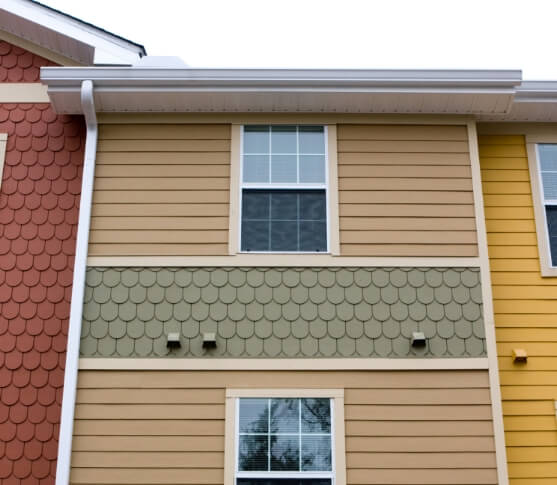
SIDING
Believe it or not, the siding on your home is more important than you probably think. While many people consider siding as purely decorative in purpose, the siding on your home actually plays a vital role in keeping your home well-insulated and protected from the harsh environment.
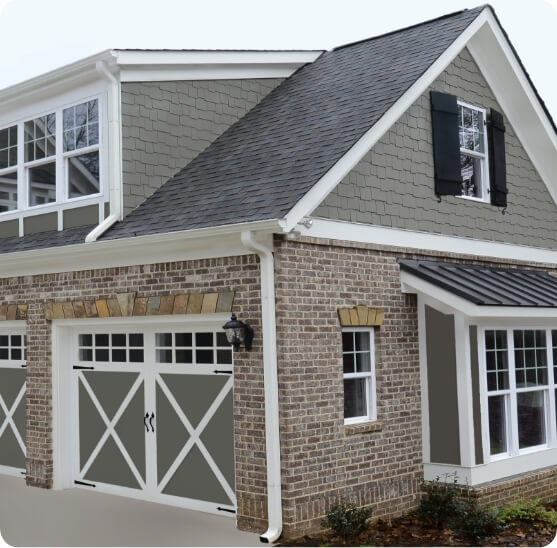
What is Siding?
In short, siding is the material that covers the outside of your home. Not only does siding protect your home from harsh weather conditions such as rain, snow, and wind, it creates a barrier so that air, moisture, pests and other elements cannot get in.
Benefits of Siding
Your driveway must inherently be strong, stable, well-drained and properly maintained. It is important to remember that it is normal for a driveway to contract, expand and settle based on temperature and weather conditions, especially when the ground freezes.
Depending on the size of the driveway, your budget, and the particular look you desire, there are a variety of options to choose from. Today’s homeowners are also able to select from a variety of finishing techniques that provide an upscale appearance manufactured to mimic brick or stone..
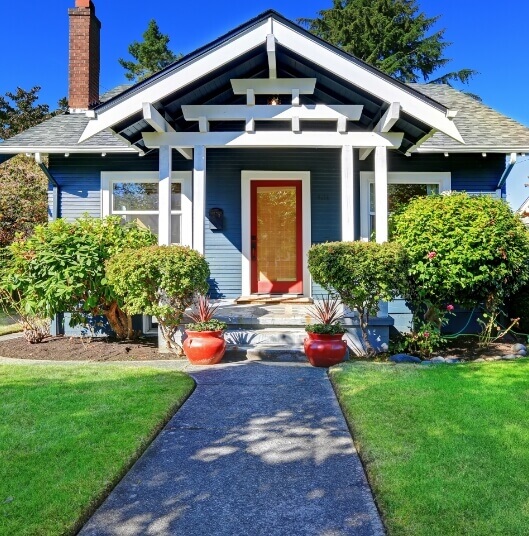
Curb Appeal
Siding is the most visible part of your home, so it is important to get it right. New siding will not only ensure that your home is protected and looks great, it can allow you to incorporate a new color scheme, accents and/or trim.
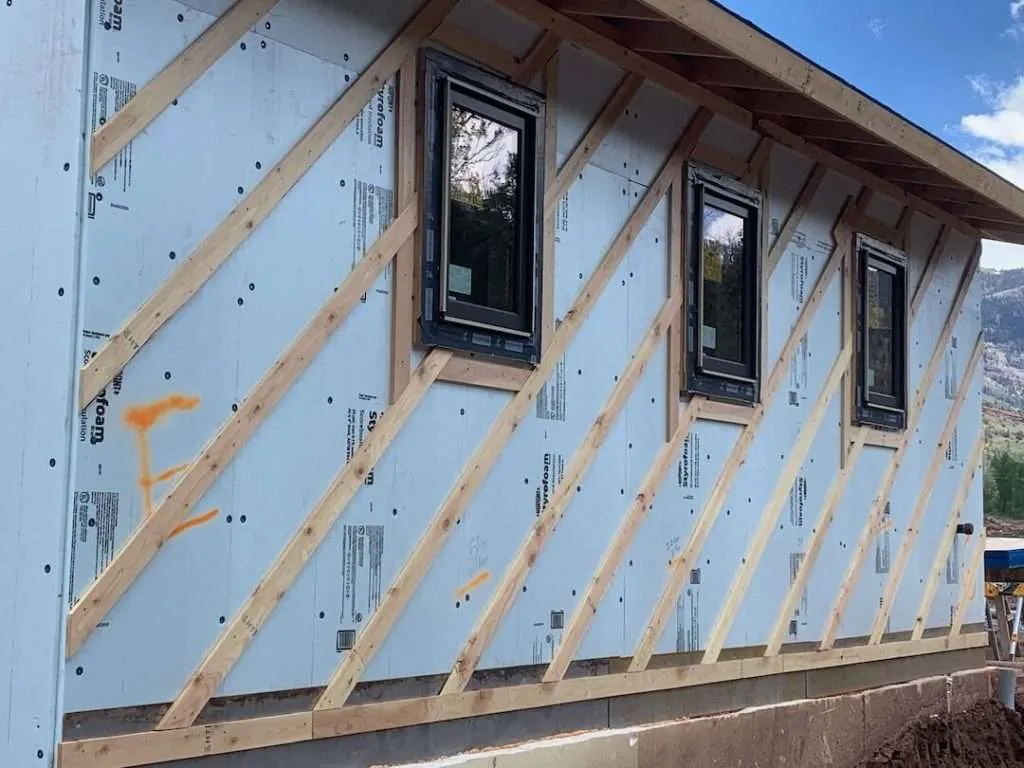
Types of Siding
Many people aren’t aware that the type and quality of the siding on a home will reflect how well it is insulated. Damaged siding can create leaks which will not only impact the temperature on the inside of your home, but can let moisture seep in creating even more damage. Not only can this affect the structural integrity of your home, but it can also increase your monthly utility bills.
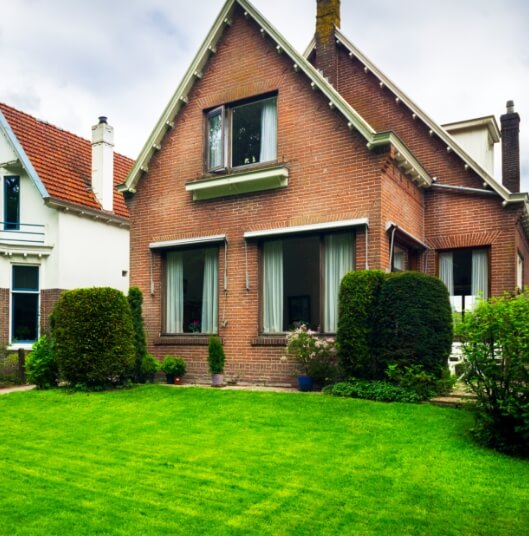
Durability
The siding on your home should be able to withstand extreme weather conditions including high winds, snow, rain, hail etc. When siding is damaged it shortens its life span which is why using quality siding materials is one of the most important factors in choosing the best siding for your home. However, a longer lifespan comes with a cost. High-quality siding, while more expensive during the initial installation, will not need to be replaced as often, which will save money in the long run.
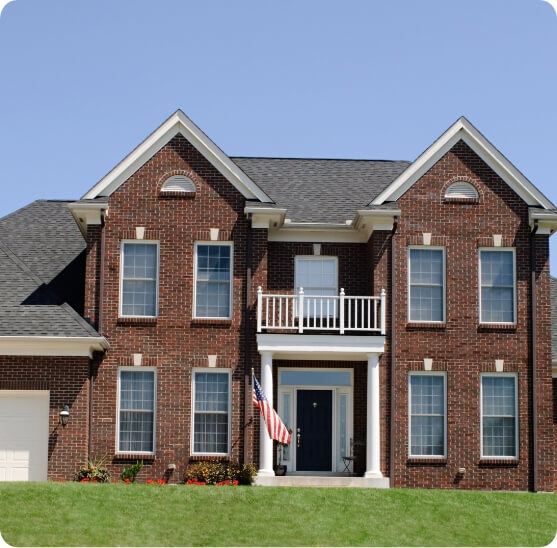
Energy-Efficiency
When installed properly, new siding should offer energy efficiency. If your home is poorly insulated, it will lose a significant amount of heat in the winter and cool air in the summer. This will not only make a difference in the comfort level inside your home, it will have an impact on your monthly energy bill.
Benefits of Siding
While choosing the right siding material for your home is an important decision, it is also a difficult one. The siding you choose must be durable, fit within your budget and look good. Each material offers unique qualities and will vary in the amount of time before requiring repairs or replacement.
While choosing the right siding material for your home is an important decision, it is also a difficult one. The siding you choose must be durable, fit within your budget and look good. Each material offers unique qualities and will vary in the amount of time before requiring repairs or replacement.
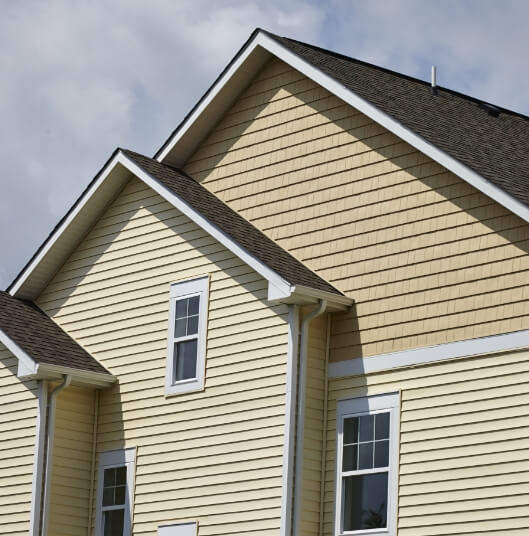
Vinyl Siding
Vinyl is the most popular siding material primarily due to its cost effectiveness. Vinyl is a form of plastic siding that offers waterproof protection when sealed properly. However, it is not as durable as some of the higher-end siding materials.
Pros:
- Improved insulation
- Durable
- Versatile (wide variety of colors and styles)
Cons:
- More expensive than vinyl siding
- Specialized installation technique
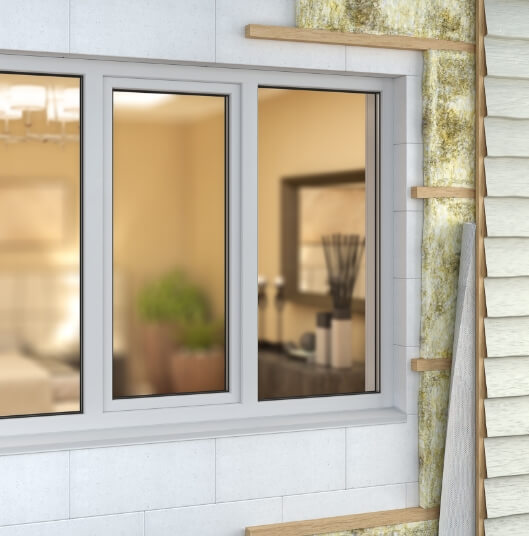
Fiber Cement Siding
Fiber cement is a luxury siding material that is a great option for homeowners who prefer the distinctive look of wood. Fiber cement siding is one of the most durable siding materials and can withstand extreme weather conditions including high winds, snow, hail and rain.
Manufactured using a mixture of wood pulp and cement, fiber cement siding can be made to look like a variety of other siding materials.
Pros:
- Extremely durable
- Versatile (wide variety of colors and styles)
- Low maintenance
- Fire resistant
- Long-lasting
Cons:
- Expensive
- Can absorb moisture
- Not energy efficient
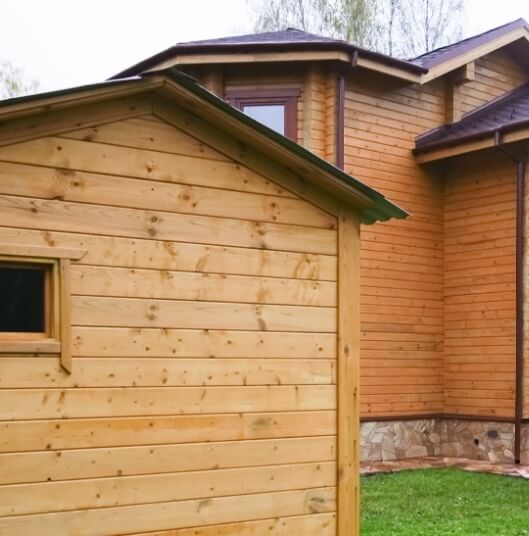
Wood Siding
One of the oldest materials used for siding, wood siding can last anywhere between 10-30 years (depending on the quality of installation and materials used). The process to manufacture wood siding is non toxic (versus the process used to manufacture vinyl siding) and is a great option for anyone looking to create a relatively low carbon footprint.
Wood is inherently a combustible material, so adding a flame retardant chemical is highly recommended. It’s important to note that wood siding requires regular maintenance and the cost will depend on the type of wood used (such as pine, fir, cedar, redwood etc.)
Pros:
- Eco-friendly
- Natural aesthetic
- Versatile (wide variety of colors and styles)
Cons:
- High maintenance (must be stained/painted regularly)
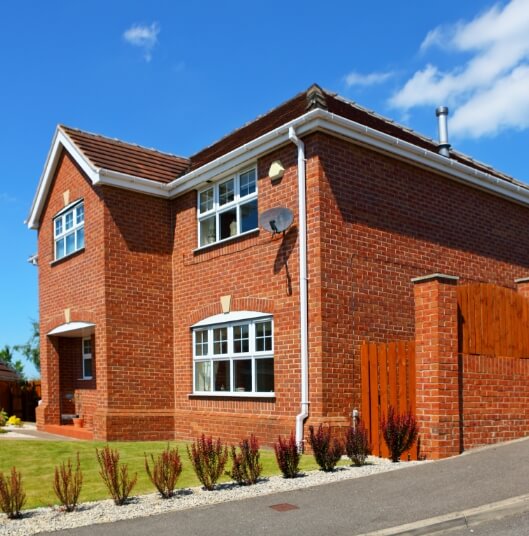
Brick Siding
Brick has been a standard siding material for many years because of its extreme durability and low maintenance. Unlike vinyl or wood siding, brick siding won’t fade in the sun, and when installed properly can last at least 100 years.
Research has shown that homes with brick siding have an increased home value compared to most other siding materials. It’s important to note that brick siding is one of the most expensive siding options and requires a waterproofing membrane to be effective (which can add to the cost of installation).
Pros:
- Classic/timeless aesthetic
- Eco-friendly
- Durable
- Fire resistant
Cons:
- Limited color options
- Expensive
- Requires regular maintenance such as re-pointing and sealing
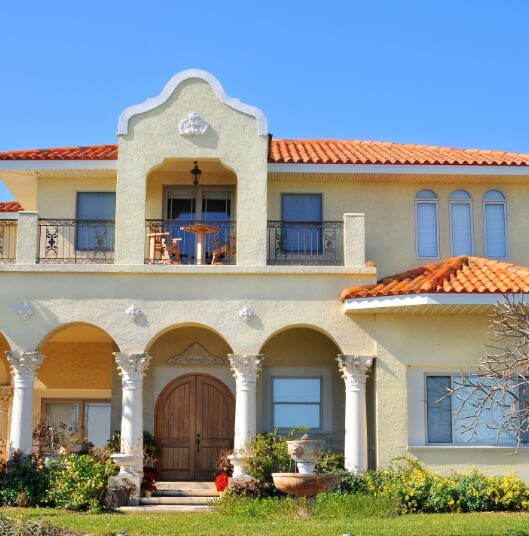
Stucco Siding
Stucco is one of the oldest, and has remained one of the most popular siding materials available. Stucco is a cement-like product which is applied in multiple layers to the surface, which also makes it one of the most durable siding materials on the market.
Pros:
- Durable
- Long lasting
- Unlimited customization
- Resistant to fire
- Resistant to pests
Cons:
- Expensive
- Prone to cracks
- Limited insulation
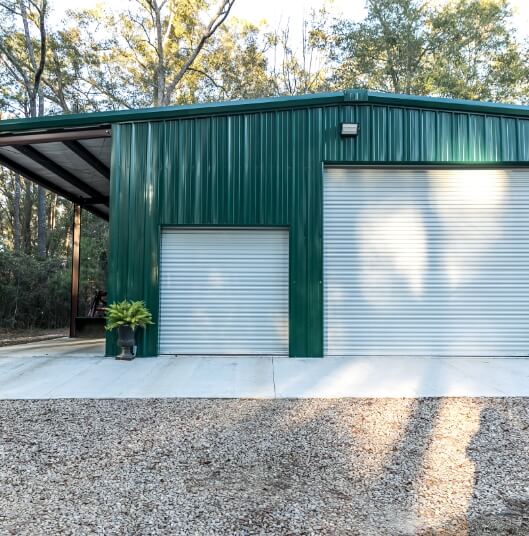
Metal Siding
While most people think of metal as a roofing material, it has gained in popularity as a siding material because it is very durable and is available in a variety of types (such as aluminum or steel). When installed properly, metal siding is virtually maintenance free.
Pros:
- Durable
- Low maintenance
- Pest resistant
- Fire resistant
Cons:
- Not soundproof
- Minimal insulation
- Expensive
- Can dent/scratch
- Cannot be Pressure Washed. (Soft Washing is safe!)
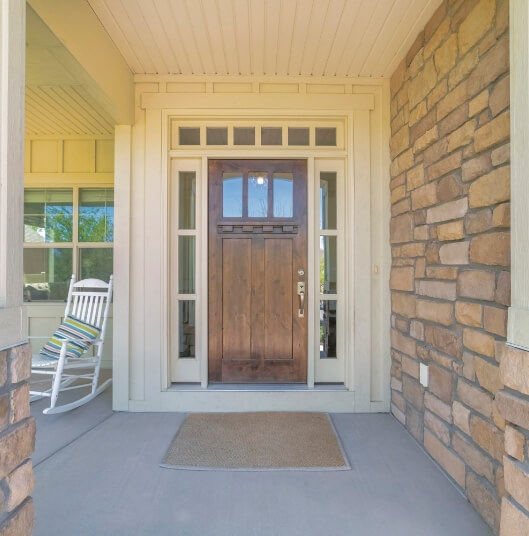
Stone Veneer Siding
Stone veneer siding will create a natural look w,jhithout the price tag of natural stone. Stone veneer is much lighter than natural stone and can be installed over virtually any kind of exterior surface (including stucco and brick).
Pros:
- Durable
- Less expensive than natural stone
- Organic aesthetic
- Can last 20-75 years
- Lightweight
Cons:
- More expensive than other types of siding, such as vinyl or wood
- Non-recyclable
- Water can become trapped behind veneer if not properly installed
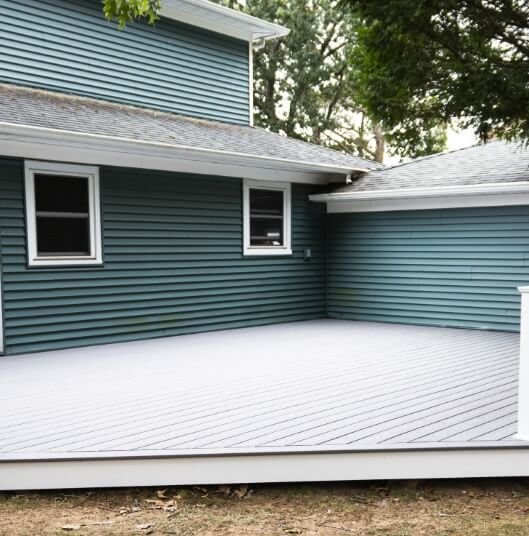
Composite Siding
Composite siding is a great option for homes located in areas where harsh weather conditions are common because it can withstand the elements. Composite siding is manufactured using a variety of elements including recycled plastic, wood and cement and is made to be impervious to moisture and rot.
Pros:
- Budget friendly
- Durable
- Aesthetics
- Moisture resistant
Cons:
- Non-biodegradable
- Will fade over time
- Can crack when exposed to direct sunlight and harsh elements

Engineered Wood Siding
A durable alternative to wood siding, engineered wood siding is a great choice for homeowners who love the look of wood at a more affordable price. Made from high density fiberboard (HDF), manufactured siding maintains its appearance (unlike wood siding) and can provide protection for decades with very little maintenance (outside of annual soft washing).
Since most engineered wood siding is manufactured from recycled wood waste, it is considered a green building material. Any damage to the exterior of the siding can result in moisture infiltration, so meticulous care must be taken to maintain this type of siding material properly.
Pros:
- Mimics the look of wood
- Durable
- Water resistant
- Fire resistant
- Pest resistant
- Long lasting
Cons:
- Expensive
- Exposed cuts can take in moisture, leading to rot
- High Maintenance
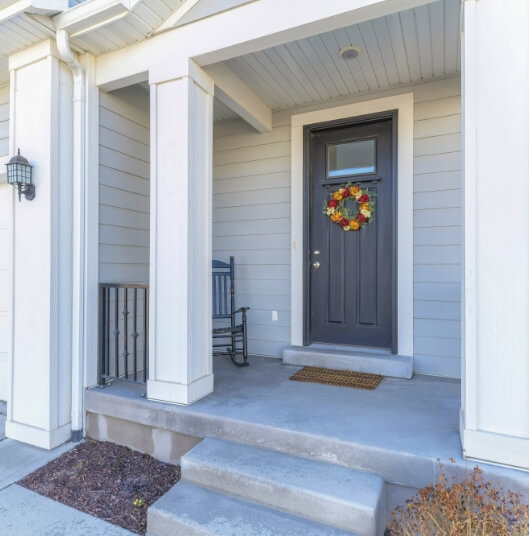
Styles of Siding
Siding plays a major role in your home’s overall appearance. Depending on the materials used, there are several different types of techniques used to create a variety of different looks. The type of siding used is dependent on a number of factors, including materials used, architectural style of the home and style preference.
Shake
Shake siding refers to small pieces of wood split from a log or siding materials cut to mimic the look of split wood. Each piece is installed in order to create overlapping, horizontal layers to create an “Old World” feel.
Shingles
Unlike shake siding, shingles feature a smooth texture and clean edges. Instead of being split from a log, wood shingles are created using a saw. Shingles made from other siding materials are commonly used to create a uniform look.
Board and Batten
Board and batten siding consists of evenly spaced vertical boards with a narrow strip of wood or other siding material (the “batten”) nailed over the spaces.
Split Logs
Board and batten siding consists of evenly spaced vertical boards with a narrow strip of wood or other siding material (the “batten”) nailed over the spaces.
Clapboard/Lap
Board and batten siding consists of evenly spaced vertical boards with a narrow strip of wood or other siding material (the “batten”) nailed over the spaces.

Considerations
Deciding on what siding material is the best for your home and family can be difficult because it is such an important decision and a significant investment. Before embarking on a siding project, it is important to understand as much as possible so that you are able to make an informed decision.

Maintenance
The amount of maintenance your siding will require is an important consideration because it has a direct correlation with its ability to do its job. In order to ensure that the siding on your home lasts, it must be maintained regularly.
Your siding should be cleaned at least once per year via soft washing (pressure washing is too harsh and can damage the siding). In addition, regular inspections for damage (especially after a large storm) should be performed. Siding that is deteriorating or damaged should be addressed immediately.

Installation
Without proper installation, your siding will likely result in costly damage to your home. Oftentimes, the extent of the damage is not known until the siding is removed, so it is very important to choose a qualified contractor that you have researched and trust to protect your most valuable investment.
The typical siding installation process is as follows:
- After a home is framed, it is covered with particle board.
- The frame and particle boards are not water resistant, so they must be protected.
- To do this, a house wrap is installed on top of the structure to create a preliminary waterproof barrier and a layer of insulation.
- The house wrap must also be protected, not only because it would not be able to withstand harsh weather conditions, but also because it is not visually appealing.
- Siding is affixed to the exterior of the house wrap.
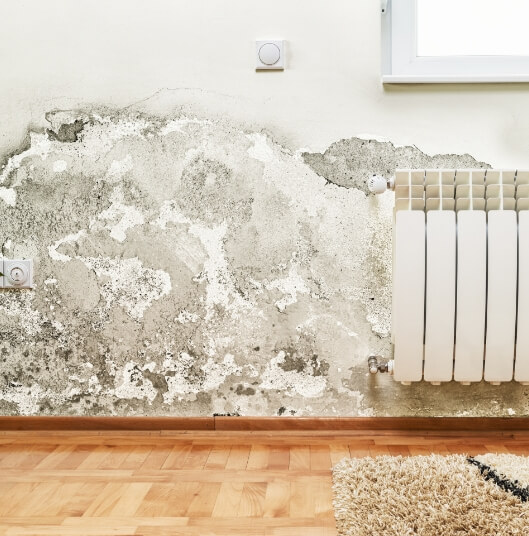
Water Damage
Water damage is generally the most common issue resulting from poor siding installation and/or use of inferior materials. Without the use of quality siding materials and proper installation technique, your home can be at great risk for storm damage, water infiltration etc.
When water penetrates any gaps in the siding of your home, it can seep underneath and cause the siding to warp and buckle. Unfortunately, the water damage cannot usually be seen from the outside and when left untreated can cause major damage, costly repairs and shorten the lifespan of the siding materials.
Just because a contractor claims to be a professional does not make it so. Do not settle. We cannot stress enough the importance of choosing the right siding contractor so that you are confident knowing that your home, family and valuables are protected.
A quality contractor, like Honey Do Men, will help you decide which siding material is best for you. In the meantime, if you have any questions about siding, give us a call and we would be happy to help you.
To Schedule A Complimentary Consultation With One Of Our Specialists
Give us a call today.
Contact Us